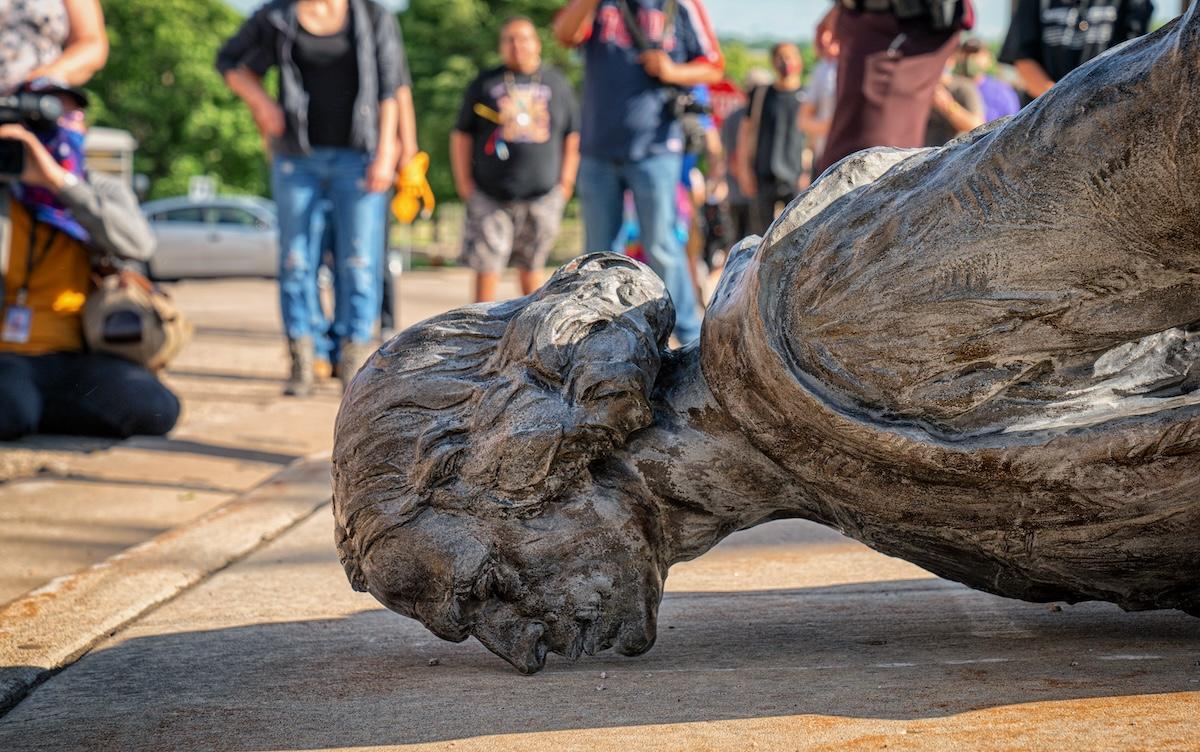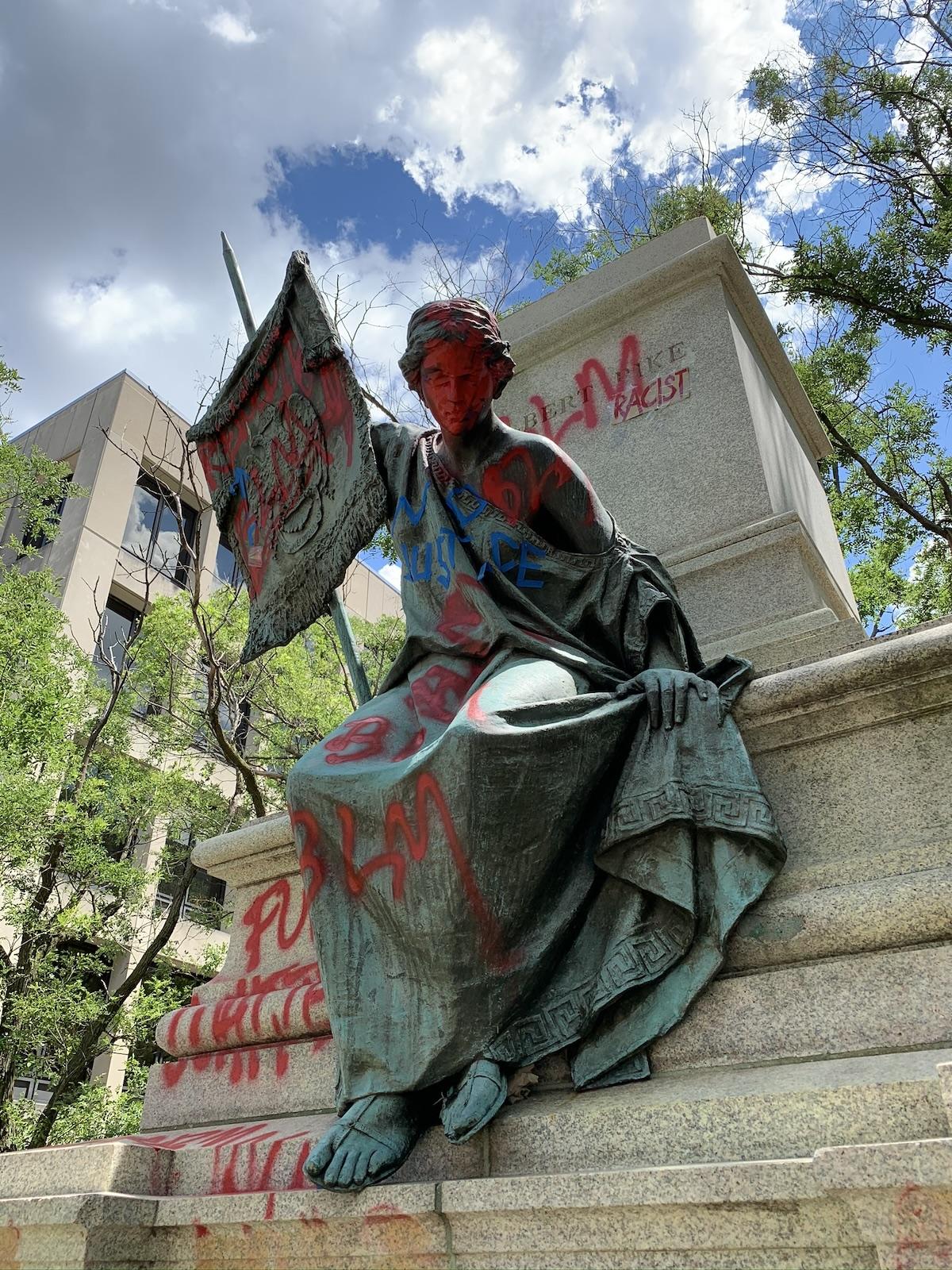Even after all the Black Lives Matter protests of 2020, there were no immediate City bills that proposed a rethinking of our public monuments that depict Confederates, slave-owners, and colonizers. Even the statue of Christopher Columbus still stands tall at Columbus Circle today.
“I stare at [a portrait of George Washington] every time I’m in that chamber," Councilmember Nurse told Gothamist. "I’m now a council member in a very old governing institution that was set up during a time where my very existence would be illegal.” Washington owned more than 300 slaves, according to the Mount Vernon Ladies’ Association.
This proposed bill does not wish to rewrite history, but rather, put it in context for the contemporary audience it is now beholden to. “From Washington to Columbus to [slave owner Peter] Stuyvesant," said Councilmemeber Shekar Krishnan who is also a sponsor of the bill, "many of the figures who occupy our most valuable spaces were both historically important and deeply flawed human beings."
























![DEl Kathryn Barton [Australian b. 1972] the more than human love , 2025 Acrylic on French linen 78 3/4 x 137 3/4 inches 200 x 350 cm Framed dimensions: 79 7/8 x 139 inches 203 x 353 cm](/sites/default/files/styles/image_5_column/public/ab15211bartonthe-more-human-lovelg.jpg?itok=wW_Qrve3)



